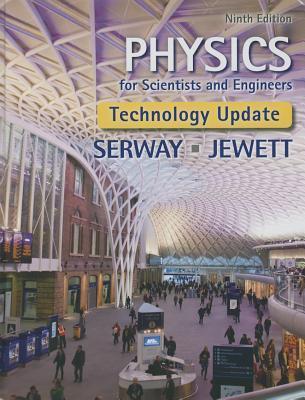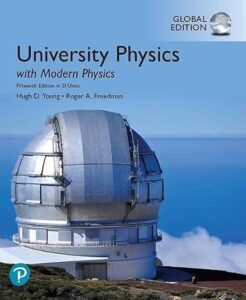“Physics for Scientists and Engineers” by Raymond A. Serway and John W. Jewett is one of the most popular and widely used physics textbooks in college courses across the world. Known for its comprehensive and detailed treatment of physics topics, this textbook is designed to equip students in science and engineering disciplines with a robust foundation in both classical and modern physics.
Content Overview
This textbook covers an extensive range of topics across several domains of physics, from mechanics to electromagnetism, thermodynamics, and quantum physics. It is typically divided into two volumes:
- Volume 1: Primarily covers mechanics, waves, optics, and thermodynamics.
- Volume 2: Focuses on electricity and magnetism, light, modern physics, and quantum mechanics.
Each chapter begins with an introduction to the core concepts, followed by mathematical derivations, worked examples, and problem sets. These are specifically designed to engage students and encourage the development of critical thinking and problem-solving skills.
Key Features
- Comprehensive Coverage: The book covers nearly every topic required for a thorough understanding of both classical and modern physics. This makes it an essential resource for undergraduate students majoring in physics, engineering, or related fields. The detailed explanations ensure students can follow along regardless of their prior exposure to the subject matter.
- Strong Emphasis on Problem Solving: Each chapter comes equipped with numerous problems designed to challenge students and enhance their understanding of the material. The book is often praised for the quality of its problems, which range from basic to complex, requiring a deep understanding of the material. Additionally, there are real-world applications sprinkled throughout the chapters to contextualize the theoretical concepts.
- Math Support: Understanding the mathematical side of physics can be particularly challenging for students. To address this, the book provides ample mathematical support, including detailed derivations of formulas and equations. The text regularly revisits mathematical concepts to ensure students are well-prepared to tackle advanced problems.
- Modern Physics Integration: One of the key features of this textbook is its integration of modern physics concepts into the core material. Topics such as quantum mechanics, relativity, and particle physics are presented in a way that allows students to see the connections between classical physics and cutting-edge research.
- Visual Aids and Illustrations: The book is full of visual aids, including detailed diagrams, graphs, and illustrations that help clarify complex concepts. These visuals are essential for understanding topics such as vector fields, electromagnetic waves, and particle trajectories.
- Conceptual Questions: In addition to quantitative problems, “Physics for Scientists and Engineers” includes conceptual questions that encourage students to think critically about the principles they are learning. These questions are designed to test a student’s qualitative understanding of physics concepts before diving into more complex numerical calculations.
- Additional Resources: Serway and Jewett’s textbook is often accompanied by a range of supplementary materials, including access to online platforms like WebAssign, where students can find additional problems and tutorials. This added support helps students reinforce their learning outside of the classroom.
Use in Academia
This textbook is widely adopted in physics and engineering departments across universities for introductory and intermediate physics courses. Its balance of conceptual clarity and rigorous problem sets makes it suitable for both lecture courses and individual study. The material is organized in a way that allows professors to structure their courses around specific topics while offering enough flexibility for deep dives into more advanced material when needed.
In addition to being a core text in undergraduate physics courses, “Physics for Scientists and Engineers” is also valuable for students preparing for standardized exams like the Physics GRE or entrance exams for graduate programs in engineering or applied sciences.
Strengths
- Clarity of Presentation: One of the major strengths of this textbook is its clear and engaging presentation of complex topics. The language is accessible, and the authors go to great lengths to explain difficult concepts in ways that are easy to understand.
- Flexibility: The book’s modular structure allows instructors to adapt the material to suit a variety of course formats, from introductory classes to more advanced topics.
- Real-World Applications: The textbook frequently relates physics concepts to real-world situations, helping students appreciate the relevance of the subject to their future careers in science and engineering.
Considerations
- Difficulty Level: While the book is highly regarded for its depth, some students may find it challenging, particularly those who are new to physics or lack a strong mathematical background.
- Length: Given its comprehensive nature, the book is quite long, and some students might find it overwhelming. However, this also ensures that it covers nearly every topic that a student will encounter in an undergraduate physics curriculum.
Conclusion
“Physics for Scientists and Engineers” by Serway and Jewett stands out as a cornerstone of physics education. Its blend of rigorous problem-solving, mathematical clarity, and conceptual understanding make it an invaluable resource for students pursuing careers in physics, engineering, and other related fields. The textbook remains a top choice for educators due to its structured approach, accessible content, and its capacity to bridge the gap between classical and modern physics. Whether used in a lecture hall or for self-study, this book provides a solid foundation for mastering physics.



